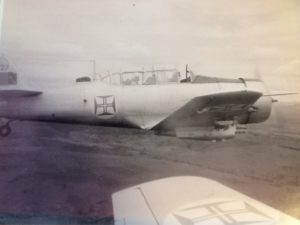G-HRVD Built as CCF4-548
- Shipped to Liverpool 1953
- Flown by RAF pilots in USAF markings as 534629 for a few weeks
- Delivered to USAFE at Landsberg am Lech in Germany
- Transferred to Luftwaffe September 1956
- Used by Flugzeugfuhrerschule A coded AA+614 until 1958
- Transferred to FIKdo TSLw 1 (Flugkommando der Technischen Schule der Luftwaffe 1) at Kaufberencoded BF-055for GCI/GCA practice for Air Traffic Controllers.
- Transferred to Portuguese Air Force on 25th September 1964 and serialled 1741
- Assigned to AB5 at Nampula as counter insurgency aircraft
- During time with AB5 detached to AM51 (Mueda) AM is a satellite base for operations.
- Assigned to AB6 at Nova Freixo during 1967
- During time with AB6 detached to AM61 (Vita Cabral)
- Suffered a belly landing on 1st August 1967. Further damage (propeller) from a hard landing two years later
- Withdrawn from service in 1973 and abandoned at Maputo Airport
- 1989 bought by Brian Zeederburg and Ian Popplewell
- Sold on to Andrew Edie and John Woodhouse at Thruxton
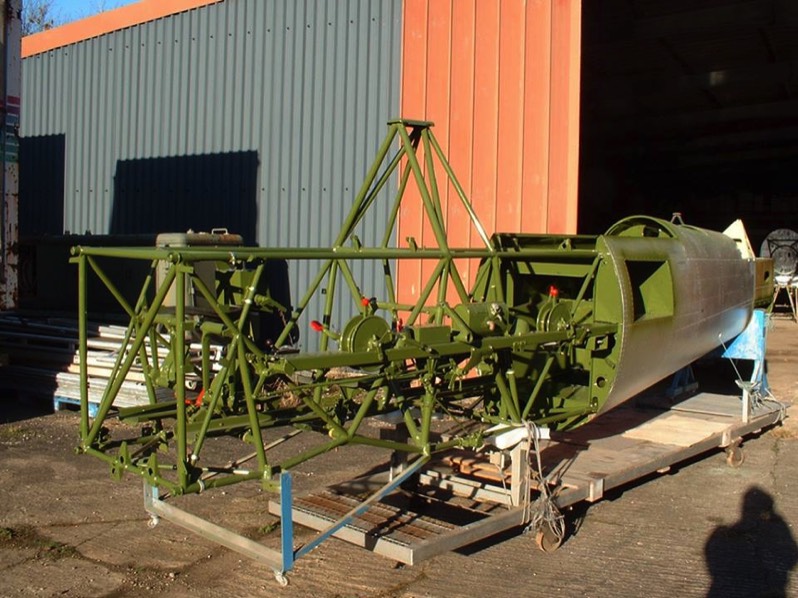
Just had a wonderful email off a former portuguese Harvard pilot that flew in G-HVRD during its service as 1741 – José Fonseca – I recently flew with anther Portuguese pilot and it was very enlightening… I have offered Jose a flight in the Wabbit if he is ever in the UK … I think we should have a FAP reunion with the Harvard Mk4 Wacky Wabbit!
Among many others Canadian Cars & Foundry (CCF) Harvard IV that I was flying in fire missions at ex-Portuguese Mozambique between August 1969 and August 1971, as a Portuguese Air Force ( F.A.P.) Pilot Officer and Flying Officer later on, “1741” was the airplane were I made most of my 1000 operational flying hours during the two years I spent in that ancient Portuguese territory.
After Elementary Flight Instruction in D.H.C.-1 Chipmunk ( at B.A.7 ) and Basic Flight Instruction in Cessna T-37C (at B.A.1 ) I was then designated to close air support missions.
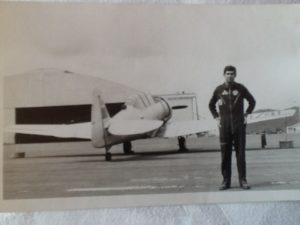
My training took place in 4 armed CCF Harvard IV
(Construct. n°// Serial n°// F.A.P. n°) :
CCF4-486 // 52-8565 // F.A.P. 1774
CCF4-517 // 52-8596 // F.A.P. 1769
CCF4-518 // 52-8597 // F.A.P. 1770
CCF4-545 // 53-4626 // F.A.P. 1785
I was then send to Mozambique. Arriving there I had been assigned to AB6 (Nova Freixo) and frequently detached to AM61 (Vila Cabral) or AM62 (Marrupa).
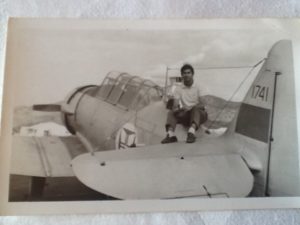 The operative armed T-6 I flew there in combat missions were:
The operative armed T-6 I flew there in combat missions were:
CCF4-425 // 52-8504 // F.A.P. 1727
CCF4-426 // 52-8505 // F.A.P. 1750
CCF4-432 // 52-8511 // F.A.P. 1782
CCF4-451 // 52-8530 // F.A.P. 1751
CCF4-483 // 52-8562 // F.A.P. 1753
CCF4-507 // 52-8586 // F.A.P. 1763
CCF4-510 // 52-8589 // F.A.P. 1735
CCF4-541 // 53-4622 // F.A.P. 1780
CCF4-548 // 53-4629 // F.A.P. 1741 <<<
CCF4-551 // 53-4632 // F.A.P. 1786
Below right picture at “location unknown” is the AM62 ( Marrupa) were I spent a lot of time.
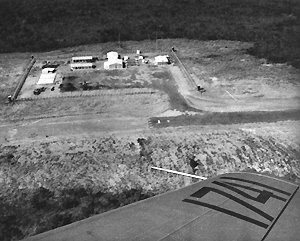 The airplanes had a lot of different armament choices:
The airplanes had a lot of different armament choices:
– Four Browning 7.7 machine guns (ex-Hurricanes and Spitfires of our ancient fleet).
– Two Matra LR 361 rocket launchers each with 36 S.N.E.B. T/447 37mm. rockets
– Two 50kgs plus six 15kgs bombs as normal load.
– Two 100 Liters/80 Kg. napalm containers.
– Guns and bombs aiming sight was a French S.F.O.M. 83A.
Notes
– The Luftwaffe code we had from the “1741” was AA+614
– All airplanes were always changing between our main base (AB6) and AMs (61 or 62).
– AM61 was Vila (not “Vita”) Cabral as posted.
-F.A.P. means Portuguese Air Force.
– B.A. means Air Base, under the command of a Group Captain ( lining up R.A.F.ranks ).
– A.B. means Aerodrome Base, under the command of a Wing Commander.
– A.M. means Maneuver Aerodrome, under the command of a Flying Officer/Flight Lieut.
– The bombs were dropped in 3 consecutive dives of 60°( 1 for each 50Kgs bomb and a 3° dive for all 15 Kgs ) starting at 3.000′ A.G.L. with a very low speed descending turn into target, wings leveled dive, aiming, drooping, followed by a 5G recover to avoid A.A. guns. The dive had to be finished at 1000′ A.G.L. to avoid own blast.
– Napalm containers were dropped one at a time after a shallow dive followed by a low level high speed pass over the target.
– The last T-6 ever constructed as a new one was the CCF4-555 // 53-4636 // F.A.P. 1788, assigned to our next A.B.5.
– F.A.P. had a total of 135 converted T-6 to Coin Operations, the main ones being C.C.F. Harvard IV and N.A. T-6 G. All other Coin Operations different T6 models had been previously modified in Portugal to T-6 G specifications.
So F.A.P. had 65 C.C.F. Harvard IV (1726 to 1790), 56 N.A. T-6 (1670 to 1725), and 14 pre-modified T-6 of other models, all of them equally converted to Coin Operations.
-I’m sending you in the following e-mail two more pictures of the former “1741” at A.B.6 ( Nova Freixo) at 1970.
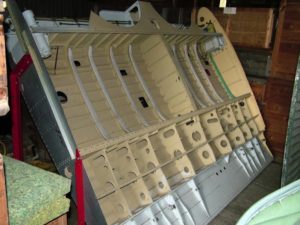 After 50 years and 19000 flying hours as an airline Captain that’s a little summary of my life with the so loved “1741” and also of my youth in the Air Force.
After 50 years and 19000 flying hours as an airline Captain that’s a little summary of my life with the so loved “1741” and also of my youth in the Air Force.
I feel very happy it’s still alive and in good hands.
Sorry for my already rusted poor English.
Thank you for your time.
Best regards.
José Fonseca
13th May 2015 – Phil Earthey This is how HRVD looked before going into storage prior to our purchasing her. No work carried out since, but looking to kick off progress on her shortly.
C.C.F. Harvard IV F.A.P. “1727” on flight ear 1970 of 1741
